12 Mowing tips For the Perfect Cut Every Time
A few simple tips on mowing your lawn will go a long way to ensuring you get a nice even cut, without ripping, scalping or smothering the lawn each time you give the grass its regular haircut.
A few simple tips on mowing your lawn will go a long way to ensuring you get a nice even cut, without ripping, scalping or smothering the lawn each time you give the grass its regular haircut.
Don’t mow your lawn too short, as this can put your lawn under extreme stress. It can leave brown or bare looking patches on your lawn, and if cut too short regularly, can seriously deplete the lawn’s energy reserves and is an open invitation for weeds to invade and seed. A good guide is the ‘one-third rule’ – only remove one-third of the leaf each time you mow.

Guideline for ideal mowing heights
(General rule of thumb: shorter for summer, longer for winter)
Green couch: 5 to 30mm
Buffalo grass (Sir Walter): 30 to 50mm
Kikuyu: 30 to 50mm
Zoysia matrella (Sir Grange): 5 to unmown
Queensland blue couch: 5 to 30mm
Broadleaf carpet grass: 30 to 50mm
Hybrid Bermuda (TifTuf): 5 to 30mm
Fescue: 30 to 50mm
It is ok to leave your clippings on the lawn every now and again, as clippings are a great source of nitrogen and can act as a natural fertiliser for your lawn. Recycling your grass clippings back into your lawn can actually account for 25% of its annual nitrogen requirements.
If you are using a regular mower you should only be leaving small amounts of clippings every so often. If you have a mulching mower that cuts the clippings up much finer, then it is ok to leave the clippings on your lawn, so long as they aren’t left in clumps and they are evenly distributed.
You definitely need to take the type of grass you have into consideration when deciding whether to catch your clippings. If you have a couch lawn and are looking for a manicured finish, it’s always best to catch your clippings. If you have a buffalo or kikuyu lawn, you can generally follow the instructions provided above.

Mowing in different directions not only minimises ‘mownotony’, it also contributes to a healthy lawn by encouraging the individual blades to grow straight, which in turn provides more space for new blades to grow. Ultimately, this gives you a thicker lawn.
If you have a different grass in one area, say front to back, wash or clean down your mower before transitioning to the other grass type. Some grasses like kikuyu for example can be easily transported into other varieties where they can quickly start to invade and spread. Ideally, you should try to install the same grass in all areas if you are looking to keep your grass variety clean.
If you want a consistent cut, you need to stick to a consistent pace when mowing. If you race over one area and are much slower in another, the grass is likely going to be cut inconsistently with bouncing and movement creating differentiation in the height of cut.
Keep your mower well maintained; sharp blades are crucial for a good cut. Blunt blades tend to tear, rather than cut the lawn.
Reel mowers, cylinder mowers, in particular, will have a better quality of cut due to the slicing ‘scissor’ action. This action is superior to that of the chopping action of a rotary mower, when comparing both with sharp well-maintained blades.
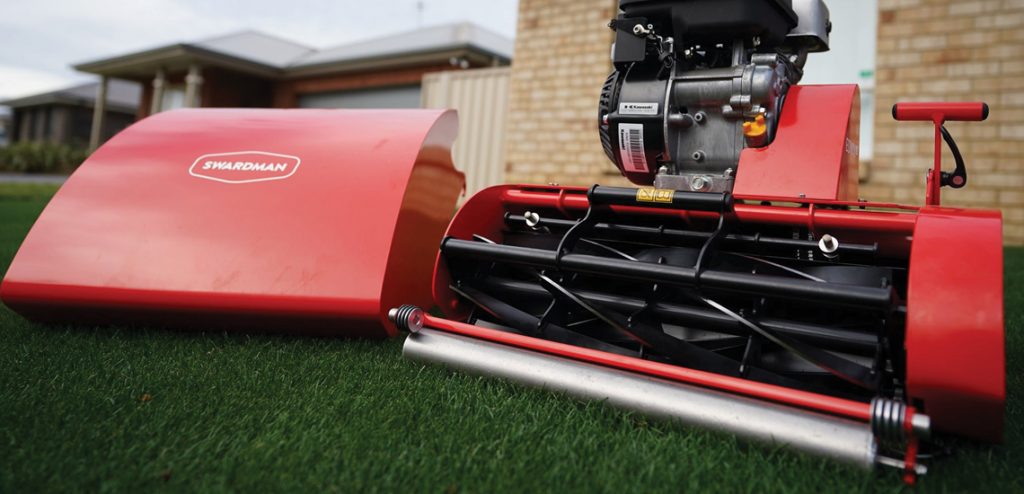
Having said this, a rotary mower with sharp blades and decent power produces a good enough cut that most people would be happy with.
Rain is great for fertilising, but not ideal for mowing. Mowing when the grass is wet can damage the leaf blades as they will tear rather than cut, leaving an uneven edge. This can give a ‘chopped’ look to your lawn. Wait until the lawn has dried out after rain or irrigation before you mow.
When mowing, do so earlier in the day or as the sun has started to go down again. The hot sun in the middle of the day is more likely to do damage to the freshly cut lawn, so doing so when it is cooler will cause less stress to the leaf.
Avoid long periods between mows – regular mowing is best. Keep in mind that your mowing routine may also need to change with the seasons. Warm-season varieties like Kikuyu and Couch, for example, love hot summers and will have vigorous growth during this time. Regularly mowing your lawn promotes lateral growth and allows more of the sun’s rays to get amongst the leaf of your lawn.
If you have lumps or depressions in your lawn it can be a good idea to top-dress your lawn. The active growing season is the best time. Information on topdressing can be found here. Levelling and topdressing will help to ensure a more even cut with less scalping.
Consider the amount you are willing to mow when choosing a turf variety. Some types of grass will require more frequent mowing than others. Mowing frequency will be an important aspect of maintaining a healthy lawn.

Anything we have missed?
Let us know what mowing tips you have found work best on your lawn.
As always, if you have any more questions please don’t hesitate to contact us for free expert advice on 1800ALLTURF (1800255873) or 07 5543 8304.
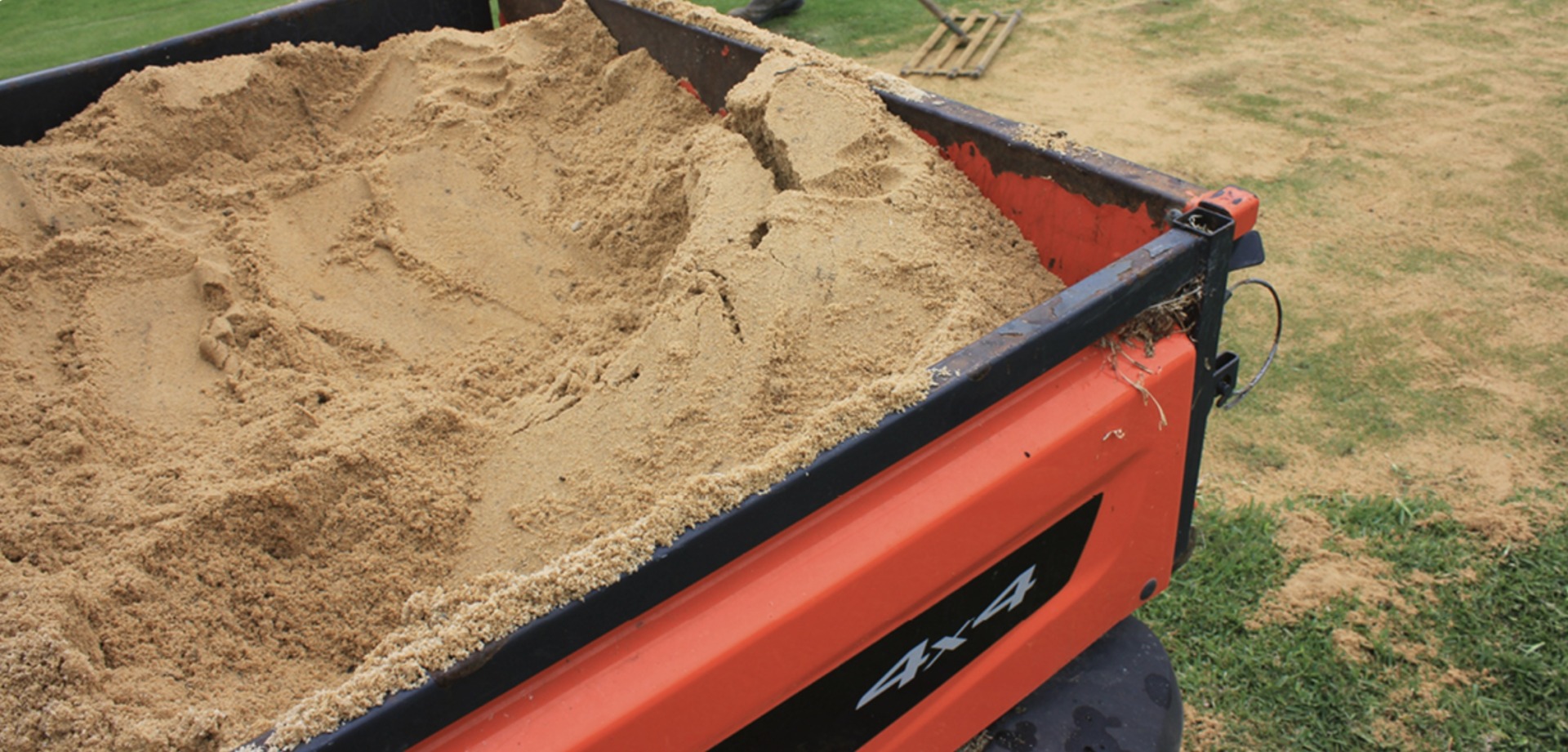
As always, if you have any more questions please don’t hesitate to contact us for free expert advice on 1800ALLTURF (1800255873) or 07 5543 8304.

As always, if you have any more questions please don’t hesitate to contact us for free expert advice on 1800ALLTURF (1800255873) or 07 5543 8304.
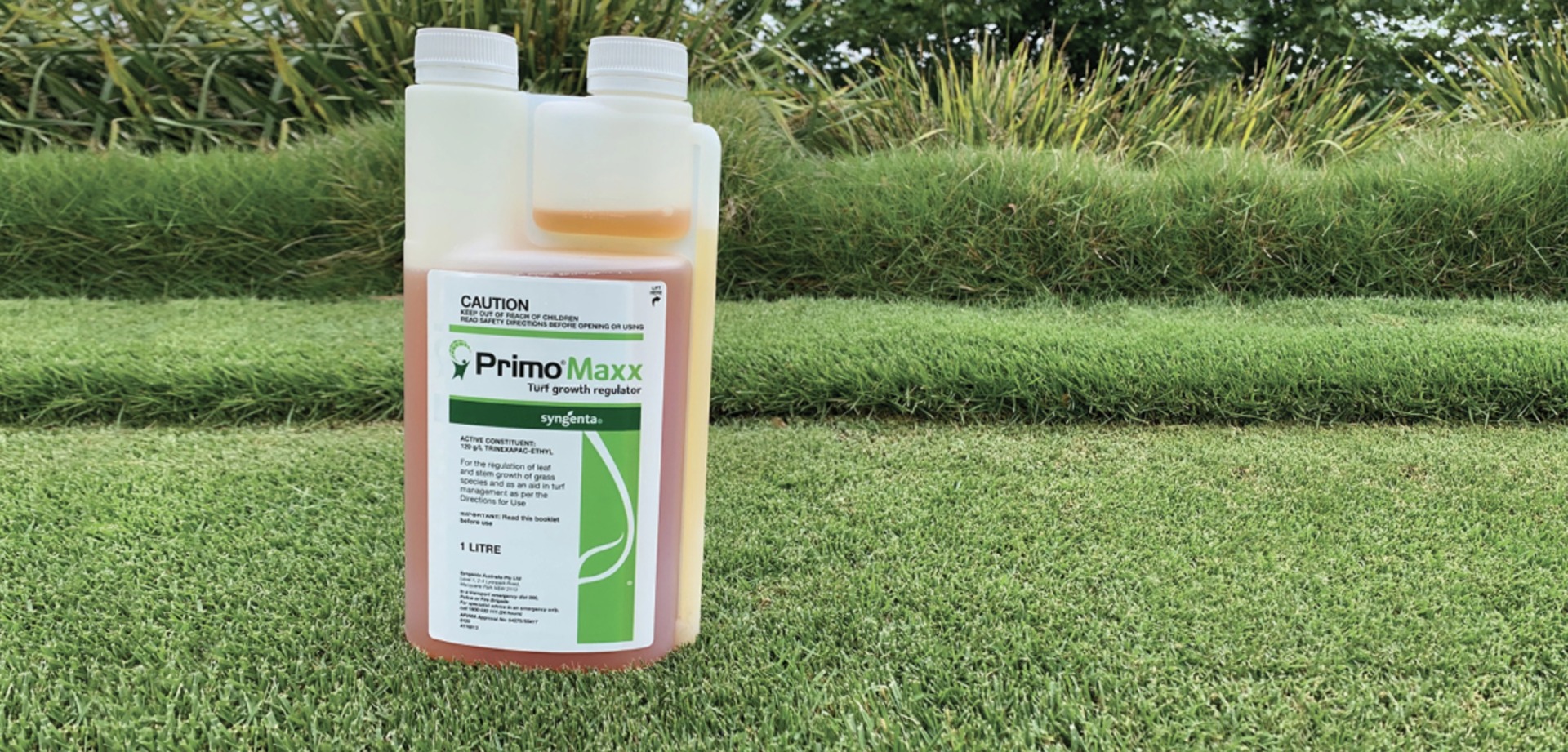
As always, if you have any more questions please don’t hesitate to contact us for free expert advice on 1800ALLTURF (1800255873) or 07 5543 8304.
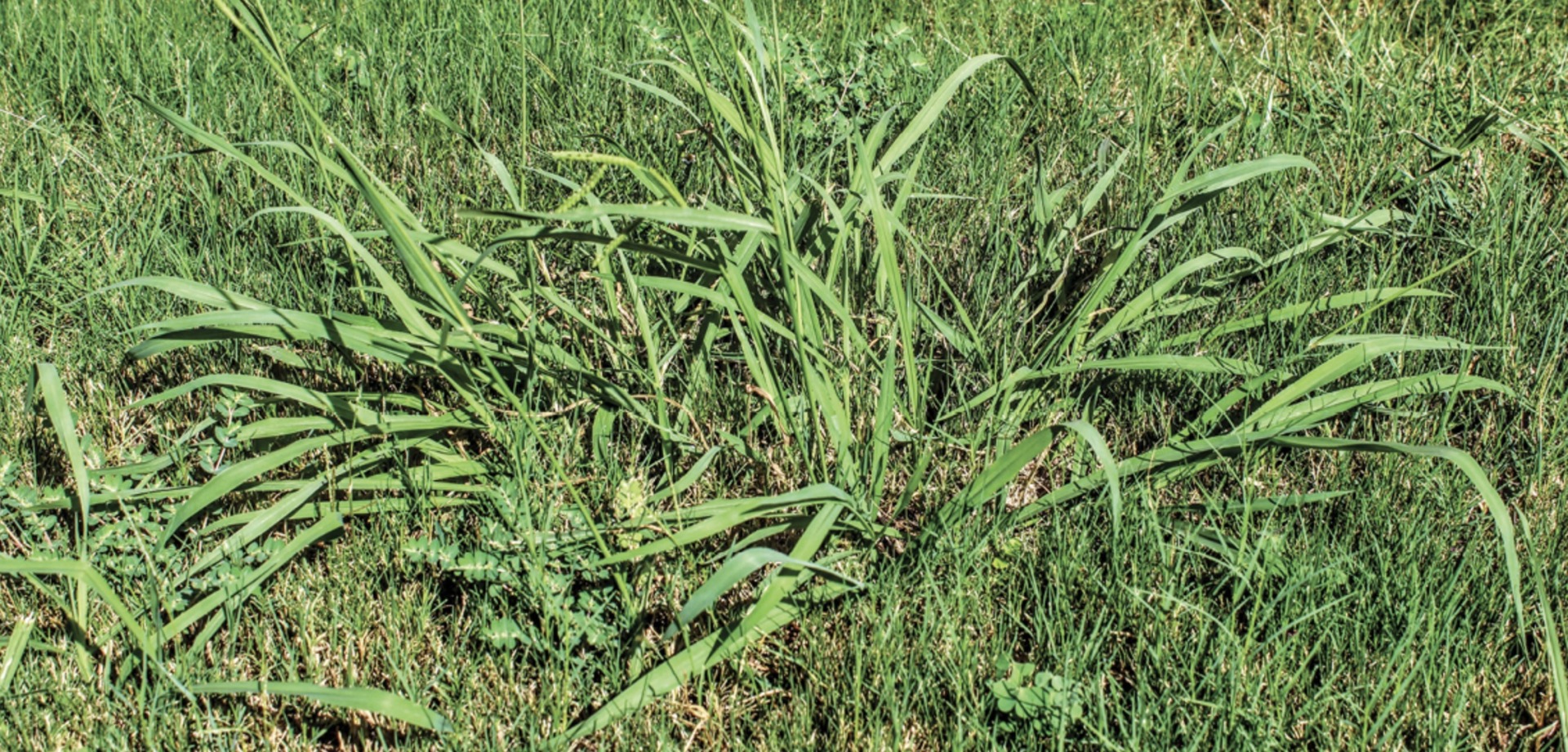
As always, if you have any more questions please don’t hesitate to contact us for free expert advice on 1800ALLTURF (1800255873) or 07 5543 8304.

Important Note Before Reading:
When applying each of these products, please ensure you are wearing the correct PPE for each product, as stated on the product label.
When using these types of products, always read the label before application.
There is a wide range of different types of sprayers that are on the market. Backpack sprayers are better suited for larger areas as they usually hold a larger amount of water and can be easier to use when spraying for longer. Other handheld sprayers vary in size and design are better suited for medium to small lawn sizes.
As every different type of sprayer and brand of sprayer will disperse water at different rates calibrating your sprayer is important, especially when applying commercial-grade products.

When applying products to your lawn it is important to ensure you are applying the correct amount of product for your lawn size. This will help avoid either not spraying enough or too much product to your lawn.
To calibrate your sprayer, you will need to find out how much water your sprayer takes to spray 100 m2 and add the label rate of the product to that quantity of water.
To find out how much water your sprayer takes to spray 100m2, best to spray a 10m2 hard surface like concrete and multiply it by 10. From this you can determine that if it’s going to take say 5L of water for you to cover 100sqm, then that’s the required amount of water you need to mix the product with.
When calibrating your sprayer, it is also important to walk at the same speed as this will also affect your calibration.
Best to check your sprayer’s nozzle regularly for any blockages and wear and tear as this can also affect your sprayer.
When applying Primo Maxx, firstly calibrate your sprayer.
For Buffalo, Common Couch and Hybrid Couch add 10 to 40mL of Primo Maxx per 100m2. For Kikuyu add 20 to 80mL of Primo Maxx per 100m2.
Please have a look at the Primo Maxx Label for further information.
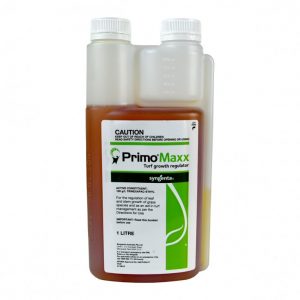
When applying Monument Liquid Herbicide, firstly calibrate your sprayer.
The application rates do change for Monument depending on what weed you are wanting to target. Please have a look at the label for the correct application rates for the weed you are targeting. The below details how you can convert mL/ha to mL/100m2.
150 mL/ha (for Nutgrass and Mullumbimby Couch only)
Therefore, 150 mL per 10 000 m2
Therefore, 1.5 mL per 100 m2
Then add 1.5mL of Monument (for Nutgrass and Mullumbimby Couch only) to your calibrated sprayer to treat 100m2.
Please have a look at the Monument Liquid Herbicide Label for further information.
When applying Heritage Maxx, firstly calibrate your sprayer.
For Heritage Maxx, the label rate is:
6L/ha
Therefore, 6L per 10 000 m2
Therefore, 60 mL per 100 m2
Then add 60mL of Heritage Maxx to your calibrated sprayer to treat 100m2.
Please have a look at the Heritage Maxx Label for further information.
When applying Proforce Duke 100WG Herbicide, firstly calibrate your sprayer.
The application rates do change for Duke depending on what weed you are wanting to target. Please have a look at the label for the correct application rates for the weed you are targeting. The below details how you can convert g/ha to g/100 m2.
150g/ha (for Winter Grass and Ryegrass only)
Therefore, 150g per 10 000 m2
Therefore, 1.5g per 100 m2
It is best to mix the herbicide with a small amount of water first to ensure the product is properly dissolved and then add to your sprayer.
Then add 1.5g of Proforce Duke 100WG Herbicide to your calibrated sprayer to treat 100 m2.
Please have a look at the Proforce Duke 100WG Herbicide Label for further information.
When applying Agador Insecticide, firstly calibrate your sprayer.
The application rate for Agador does change for the pest which you were wanting to target.
For Couch Mites use 10 to 20 mL per 100m2. For Ring Nematode and Sting Nematode use 20mL per 100m2.
Please have a look at the Agador Label for further information.
If you have a ColourGuard hose on bottle and are wanting to apply it through a sprayer, use half the 2L bottle of ColourGuard and apply with 3.5L of water. This will then be able to cover up to 100m2.
When applying each of these products, please ensure you are wearing the correct PPE for each product, as stated on the product label.
When using these types of products, always read the label before application.
As always, if you have any more questions please don’t hesitate to contact us for free expert advice on 1800ALLTURF (1800255873) or 07 5543 8304.
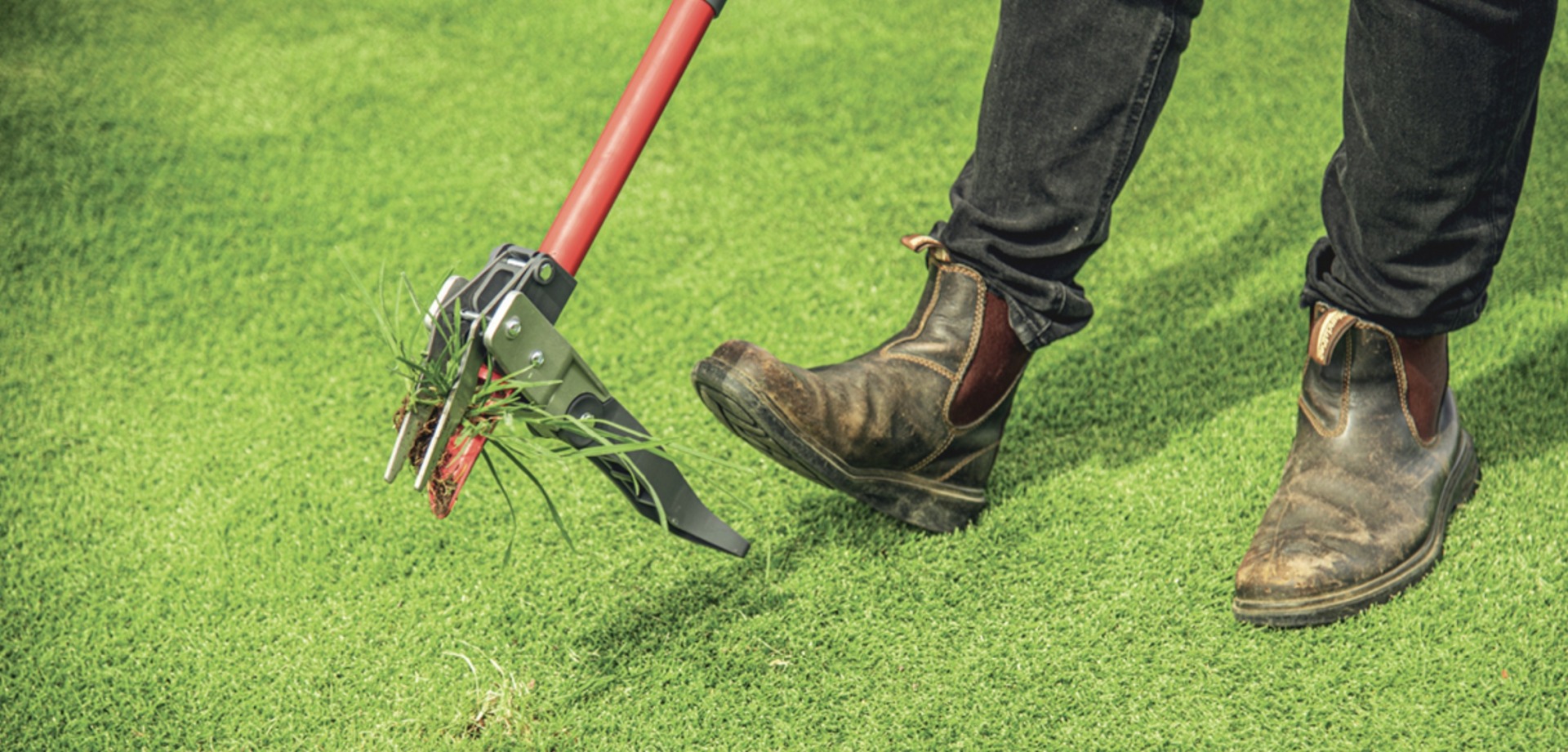
If you mow your lawn correctly and frequently, you should manage to avoid the invasion of most weeds. But if you have found that some of these undesirable weeds have infiltrated your lawn, then there are a few methods for weed removal.
Many small weeds can be carefully pulled out by hand; however, you will need to make sure you have removed the roots. Using a wedding trowel or long-handled mechanical device and prizing around the roots will help ensure total removal. The bigger the weed, the bigger and stronger the roots.
To make this job a little easier, you might want to try something like the Wolf Garten Ergo Weeder. It is very easy to use and saves you from bending down. It quick and easily digs down underneath the weed and when extracted removes the entire weed, roots and all.
There are various herbicides available, including selective and non-selective types.
Non-selective products like Round-Up (Glyphosate) kill most plants including your lawn; selective herbicides target specific weeds only.
It is strongly recommended that you consult your local nursery or turf expert to properly identify the weed in question first, so you can treat it with an appropriate and effective spray.
For common broadleaf weeds like cudweed, clover, bindii or creeping oxalis, you can use a broadleaf herbicide as Amgrow Bin die or Lawn Solutions All Purpose Weed Control. These products generally contain actives like Bromoxynil, MCPA and Dicamba. For buffalo lawns, except ST varieties, make sure you use the Bromoxynil based products like Lawn Solutions All Purpose Weed Control as Dicamba can harm your buffalo grass.
Some other weeds require a particular herbicide for treatment, so identification is very important.
There is also a way to prevent some weed types from appearing at all.
A pre-emergent herbicide like Oxafert targets weed seeds before they take hold by forming a barrier at the soil level that stops the germination of any new seedlings. Pre-emergents can be used in the prevention of Winter Grass, Summer Grass, Crowsfoot and Crab Grass.
If your preference is to avoid the use of herbicides on your lawn, then there are some organic weed treatments that may work against particular weeds.
Some of these options include boiling water, salt, vinegar, cornmeal gluten and nonanoic acid – but keep in mind that these will almost always be non-selective and will harm your lawn as well, so spot treating is the way to go.
With the use of any herbicides, always make sure you wear the appropriate protective equipment including gloves and a mask, follow the label instructions and make sure that the particular product is safe to use on your turf variety.
As always, if you have any more questions please don’t hesitate to contact us for free expert advice on 1800ALLTURF (1800255873) or 07 5543 8304.
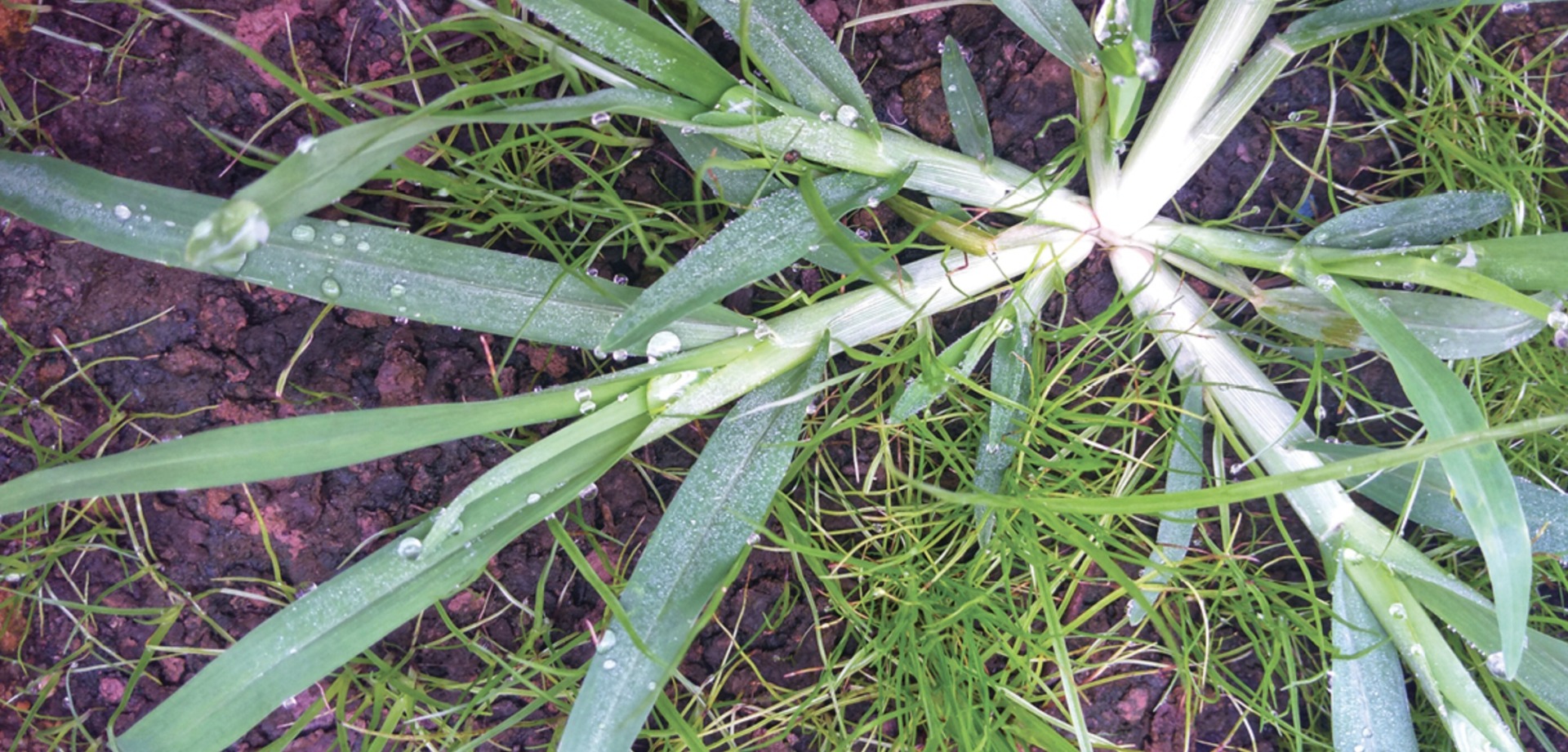
Crowsfoot is known by many names, but one of the most common it goes by here in Australia is Crabgrass.
Crowsfoot, as its name suggests, has a spiked flower with a similar appearance to that of a crow’s foot.
Crowsfoot grass is a summer annual that grows in easy to identify tufts. It stays fairly flat to the ground with almost white flat sheathed stems and smooth strap-like leaves.
Crowsfoot grass is difficult to control weeds that can tolerate low mowing and will thrive in nutrient-deprived and compacted soil conditions. It will begin to germinate in the soil when temperatures reach above 15°C and can grow extremely quickly once active.
Seed heads appear usually from late spring or early summer. These seed heads can have as many as ten spikelets on each long stem. In an unhealthy lawn, if left to seed and spread, Crowsfoot will quickly infiltrate right through the entire lawn. Crowsfoot is commonly found throughout most Australian states including Queensland, New South Wales, Victoria, Western Australia and the Northern Territory.

The best way to remove crowsfoot is to chip out by hand. Make sure when doing so that you carefully remove the entire plant and don’t spread any seeds during the process.
Treating Crowsfoot with a selective herbicide can be difficult as many herbicides will kill your lawn variety as well.
Paspalum, Nutgrass & Clover Weed Killer and herbicides formulated with the active DSMA will control crowsfoot. It can be easily mixed in a pressure sprayer, with the addition of a surfactant or wetting agent to ensure it adheres better to the leaf. For best results, spray the crowsfoot when it is actively growing during the warmer months. Repeated applications may be required in order to fully eradicate it from your lawn. Make sure you adhere to the application rates on the side of the product.
*For kikuyu, buffalo lawns and QLD Blue Couch, it is best to only spot spray the crowsfoot and not the entire lawn as it can cause harm to your grass as well.
Due to a supply shortage of DSMA across the industry, many garden centres and stores have no longer been able to get stock of these herbicides.
Another option is to treat the individual weed tufts with a non-selective herbicide like glyphosate (Round Up or Zero). You will need to make sure you do so extremely carefully as it will kill everything it comes in contact with. The safest way is to use a small paintbrush or weed wand and carefully brush the glyphosate only onto the crowsfoot leaf.
The best way to control Crowsfoot is to maintain a healthy lawn where it is unlikely to infiltrate and spread. Being proactive and removing it as soon as it appears and before it goes to seed will be the key to preventing it from spreading out of control.
Another way of preventing the seed from germinating is to apply a pre-emergent herbicide like Oxafert in early spring. An application in Autumn will also help to prevent the germination of winter weeds as well.
As always, if you have any more questions please don’t hesitate to contact us for free expert advice on 1800ALLTURF (1800255873) or 07 5543 8304.